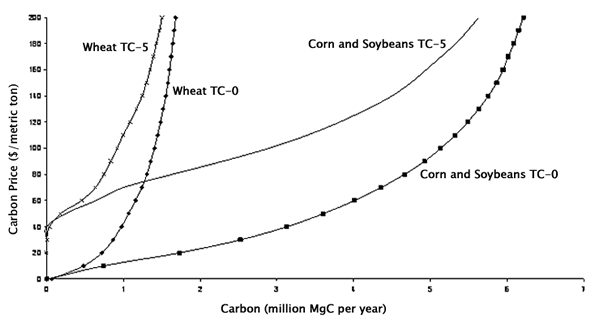Most commercial-scale farms, though operated by single families, are managed as businesses and therefore must place a high priority on profitability to survive and prosper. Not surprisingly, economic studies find that the decision to adopt conservation practices, including conservation tillage, are motivated to a substantial degree by profitability.
Studies show that risk, uncertainty, and other socio-economic factors can also impact adoption rates of new practices. Factors such as age, education, experience and farm size, in addition to economic returns, have been found to influence adoption of conservation practices. Providing farmers with carbon payments or other incentives may help overcome risk aversion and other constraints to adoption of new practices.
Achieving goals to reduce GHG emissions, therefore, is likely to depend on economics as well as available technology and biological potentials. Studies to date show that, using available technology, soil carbon sequestration is cost competitive with other forms of mitigation options.
Less data is currently available to estimate the economic potential for mitigation of agricultural emissions of N2O and CH4. At carbon prices of $50/tonne or less, a suite of economic analyses suggest that carbon sequestration amounts could be on the order of 27-70 Tg C per year. Studies of carbon sequestration potential from afforestation of agricultural lands yield estimates of 50-250 Tg C per year at a carbon price of $50. However, the amount of carbon sequestration that can be attained shows strong regional differences related to the environmental conditions and amount of land where practices can be implemented (which determines the technical potential). Differences in the costs of switching practices along with other socioeconomic factors affect how many farmers adopt mitigation practices at a given price. National-level studies suggest that mitigation options based on soil carbon sequestration would predominate in the Midwest and Great Plains regions, whereas afforestation activities would predominate in the Southeast.
 |
| Carbon Supply Curves for the Central United States, Based on Adoption of Conservation Tillage in Corn and Soybean Systems and Adoption of Conservation Tillage and Fallow Reduction in Wheat Systems, with Zero and $5/ha Transaction Costs (Source: Antle et al. 2005, http://www.climate.montana.edu/publications-by-year.htm ). |
|







